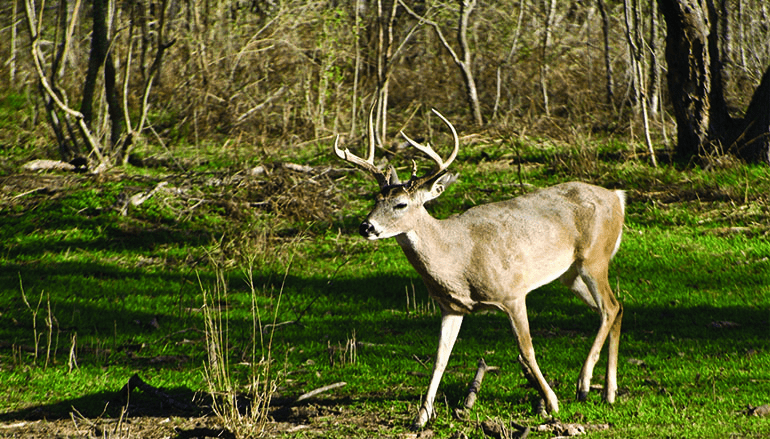
Arkansas Deer Harvest Tops 200,000
Deer harvest surpasses that mark for fifth straight year
The Arkansas Game and Fish Commission reports Arkansas hunters have checked more than 200,000 deer. Hunters in that state have done so for five years in a row. “The first time the harvest surpassed 200,000 deer was in 2012,” said Ralph Meeker, AGFC assistant deer program coordinator. “And it’s stayed relatively stable.”
According to Meeker, this may mean the current season structure matches the deer herd’s growth potential, keeping the herd in balance. “During the recovery of the white-tailed deer, seasons supported growth,” Meeker said. “But as the species recovered, we needed to shift the season structure to promote sustainability and match the carrying capacity of the space available for the wildlife.” Meeker says this year tracks very similar to the 2014-15 season, in which 208,075 deer were checked by hunters. “This year we had reports of large amounts of hard mast, such as acorns, in many parts of the state,” Meeker said. “All that forage in the woods changes deer movement and makes deer less likely to come to food plots and feeders.”
Increased harvest noted in CWD areas
This change may be responsible for some checked harvest decreases in some deer zones where hunters rely heavily on feeders. But increases in other zones, particularly where CWD has been found, have balanced the overall harvest. Meeker is happy to see deer harvest in the state’s CWD management zone increase. Regulations were modified last year to liberalize the season.
“Lifting the three-point rule and allowing people to count a button buck as an antlerless deer in Deer Zones 1 and 2 proved to increase the harvest and hopefully will reduce deer density in that area,” Meeker said. “Reducing deer density can help to slow the rate at which CWD spreads through animal-to-animal contact.” Meeker says the lifting of the three-point rule also enabled hunters to remove younger bucks from the herd. “Young bucks are known to disperse more, and we want to slow the spread of the disease spatially,” Meeker said. “So far, modifications to our harvest regulations are achieving the results we were hoping for in regard to harvest.”



